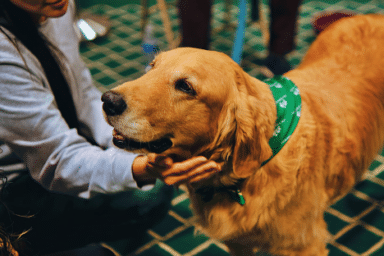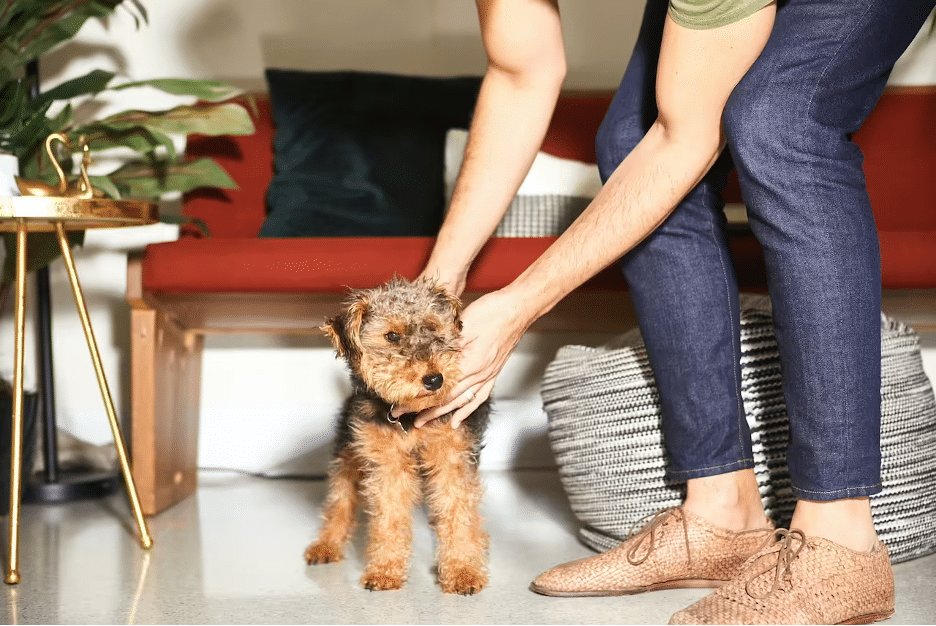

While the rewards of owning a dog are huge, so too are the responsibilities. To find the perfect dog, it’s important to choose one that best fits in with your lifestyle.

If you’ve decided a dog is the right pet for you, congratulations. People with dogs tend to be healthier and happier. They also suffer less from depression, stress, high blood pressure, heart disease, and loneliness than those without a canine in their lives. A close relationship with a dog can provide you with years of protection, companionship, and unconditional love.
While the rewards of owning a dog are probably greater than any other pet, they also come with a lot of responsibilities—and expenses. All dogs need daily outdoor exercise, regular medical check-ups, and a lot of attention from their owners. To make sure you find the perfect dog for you, there are a number of factors to consider:
What size dog fits your lifestyle? Even though it seems logical that a smaller dog would be happier than a larger one in an apartment without a yard, that isn’t necessarily true. All dogs do need daily exercise and outdoor activity, but some need more than others.
For example, oversized Newfoundlands actually prefer lounging around home and taking leisurely walks. And the tiniest of terriers can be extremely rambunctious and need lots of exercise and outdoor stimulation.
There’s no denying that puppies are adorable, but along with the cuteness comes added responsibility. Puppies require more time and attention for house training and behavior training, which may include patiently tolerating “accidents” and chewing phases. For these reasons, people who don’t have time for a puppy or prefer not to deal with training, often decide to adopt an older dog.
Additionally, small children or elderly adults in your family may not have the patience or ability to manage a puppy’s exuberance.
Another choice may be between a purebred or mixed breed. Some people prefer purebred dogs because they enjoy participating in dog shows, or are drawn to the “look” or characteristics of a particular breed.
Other people prefer mixed breed, “one-of-a-kind” dogs. Adopting a dog that needs a good home, whether it’s a puppy or mature dog, a purebred or a mixed breed, can be very rewarding. Some people say adopted dogs exhibit a special bond and appreciation for their owners.
Whichever type of dog you prefer, there are advantages and disadvantages to consider.
Purebred
Pros:
Cons:
Mixed breed
Pros:
Cons:
There are over 150 different types of purebred dogs, and an exponentially larger number of mixed breeds. You can narrow down your choices by realistically matching a dog’s “happiness factors” with your own. Hang around dog parks and talk to other dog owners. They can give you clues as to whether a certain type of dog will be happy with what you are able to provide.
[Read: The Health and Mood-Boosting Benefits of Pets]
Keep in mind that dogs were originally bred to serve specific functions. Kennel Clubs have divided dog breeds into seven different groups, based on those origins:
[Read: Health Benefits of Walks with Your Dog]
Choosing a dog based on appearance only is never a good idea. Instead, think about your lifestyle and what kind of dog will fit into that. This will ensure that both you and your canine friend end up happy.
Here are some questions to ask yourself:
If you are going to be sharing your home with a dog, what kind of space can you offer them? For example, there are dogs that will do just fine sharing a tiny studio apartment with you, but not every breed will be happy with that arrangement.
If you live in an apartment, consider smaller breeds that adapt well to confined spaces, such as French Bulldogs, Cavalier King Charles Spaniels, or Boston Terriers. On the other hand, if you have more space to offer (and preferably an outdoor area, such as a backyard or a patio) larger breeds with more energy like Labrador Retrievers or German Shepherds will be an option, too.
Before getting a dog, it’s important to consider other members of your household. If you have kids, you’ll definitely want to make sure your new canine companion is good with children. Golden Retrievers and Labrador Retrievers, for example, are known as great family dogs.
If you already have other pets in your home, consider how they will react to your new canine companion. Sporting breeds like Retrievers and Spaniels, for example, tend to have a more friendly demeanor around cats and other pets. Terriers, on the other hand, usually have a high prey drive which makes them more likely to chase after your cat.
Dogs are social animals and thrive on human interaction. Some breeds demand more attention, while others are more independent.
Breeds like the Border Collie, Australian Shepherd, and Labrador Retriever are highly sociable and require lots of interaction. On the other hand, Dachshunds and Greyhounds are dogs that are usually quite independent and don’t require as much attention (although they still need lots of love and care).
Consider your own activity level and interests. Active people who enjoy outdoor adventures may prefer breeds that can keep up, such as Border Collies, Australian Shepherds, or Dalmatians. These dogs need mental and physical stimulation every day, so you should be able and willing to provide that. If you have a less active lifestyle, look for breeds that require less exercise, like Bulldogs, Basset Hounds, or Shih Tzus.
Grooming needs vary widely among breeds. Some dogs require regular brushing, trimming, and bathing, and frequent trips to the groomer, while others have low-maintenance coats.
Short-haired breeds like Beagles, Doberman Pinschers, and Boxers need very little in terms of grooming while Poodles, Bichon Frises, and Yorkshire Terriers may need more attention as well as regular haircuts.
Once you’ve narrowed down your choices, where do you find the dog of your dreams? Purebreds are usually obtained through breeders and breed specific rescue groups, although they can also be found at animal shelters. Mixed breeds are abundant at shelters and rescue groups.
Many of these retailers get their dogs from “puppy mills”, dog-breeding factories that treat the animals inhumanely. Over-breeding and overcrowding often lead to health and development problems in their puppies.
Responsible breeders want to meet their buyers in person to ensure that there is a good fit between the owner and the pet.
Source: Humane Society of the United States
You’ll have a very different experience when visiting each of the sources for your new dog.
Reputable breeders are the place to look for a purebred dog, as well as “designer” mixed breeds, such as Labradoodles (Labrador Retriever/Poodle mix).
Responsible breeders will encourage you to visit their facilities—often a home—to meet and interact with their dogs. Reputable breeders want to make sure that their animals are a good match with the people purchasing them and that they will be living in a healthy, loving environment. For ways to identify a reputable dog breeder and avoid those who exploit animals, see the Helpful links section below.
Rescue organizations literally rescue “homeless” dogs. Many come from animal shelters. Although some rescues have facilities where the animals are housed, most shelter their dogs temporarily in foster homes, at boarding facilities, or veterinary offices. In these places the animals are screened and observed for health and behavioral problems.
Rescues hold adoption events, usually on weekends, to give the public opportunities to meet available dogs. Many rescue groups have websites with photos and descriptions of their animals.
Animal shelters are funded and operated by a city, county, or a private organization (usually nonprofit). Shelters are a wonderful place to find an adult dog—and sometimes puppies are even available.
Visiting an animal shelter can be depressing, with so many dogs kept in less-than-ideal conditions and confined in cages because of budgetary constraints and overcrowding. Many of the animals, fearful and in shock, will not exhibit exuberant personalities. But shelters can be a treasure trove of unpolished gems. Usually time can be spent with dogs outside of their cages, giving them an opportunity to show you how much love they can give.
[Read: Best Friends: You and Your Dog]
Breeders, shelters, and rescue organizations usually let prospective owners meet and interact with available dogs. If possible, try to visit the dog a couple of times to best gauge a dog’s temperament before making a decision.
While dogs can be hard work, they are truly remarkable companions. Try to take a moment every day to notice the many ways in which your new friend has enriched your life.
BetterHelp is an online therapy service that matches you to licensed, accredited therapists who can help with depression, anxiety, relationships, and more. Take the assessment and get matched with a therapist in as little as 48 hours.
Take Assessment HelpGuide is user supported. We earn a commission if you sign up for BetterHelp’s services after clicking through from this site. Learn moreFind your new best friend from a network of over 11,500 shelters and rescues. (Petfinder)
Find a pet from shelters, rescues, and individuals. (Adopt a pet)
Search RSPCA rehoming centres.
AdoptaPet (RSPCA Australia)
Use the worldwide shelter directory to search for animal shelters, animal rescue groups, and other animal sheltering facilities in your country. (Hugs Society)
Millions of readers rely on HelpGuide.org for free, evidence-based resources to understand and navigate mental health challenges. Please donate today to help us save, support, and change lives.
Donate to HelpGuide.org today